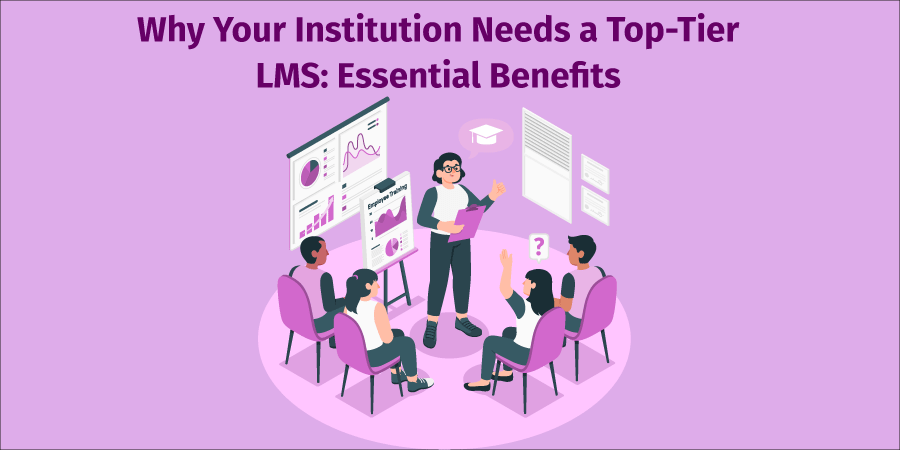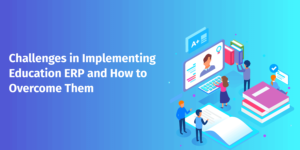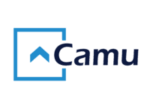
Why Your Institution Needs a Top-Tier LMS: Essential Benefits
As the world becomes more connected and fast-paced, educational institutions are adapting by implementing Learning Management Systems (LMS). LMS offers a seamless learning experience for schools and colleges, benefiting students, instructors, and administrators.
With around 73.8 million users worldwide, LMS has become a common tool in the education industry. As the best learning management system provider, we will delve deeper into the features and benefits of learning management systems emphasizing its value as the top choice for managing learning.
Features of an Effective Learning Management System
- Flexibility to Accommodate Your Business Process: A good LMS should be customizable to adapt to the specific business processes and workflows of the institution. This ensures that the LMS aligns with the institution’s unique requirements.
- Easy Extensibility: The LMS should be easily extensible, allowing for integration with third-party tools, content, and applications. This enables the institution to enhance and expand the capabilities of the LMS as per their evolving needs, without major disruptions. The benefits of an LMS are maximized when it is seamlessly unified with a Student Information System (SIS).
- Various Delivery Formats: The online learning platforms or LMS should support various delivery formats such as online courses, blended learning, and microlearning. This adaptability caters to the varied learning preferences of students and aligns with the institution’s teaching methodologies
- Advance Reporting and Analytics: It should provide comprehensive reporting and data analytics capabilities. This enables the institution to track learner progress, assess course effectiveness, and make data-driven decisions to improve learning outcomes.
- Social Learning Integration: Integration with social learning features like discussion forums, chat, and collaboration tools fosters a collaborative learning environment. This, in turn, encourages peer-to-peer learning and knowledge sharing, enhancing the overall learning experience of students.
- Feedback System: An effective LMS such as from Camu Digital Campus also includes a robust feedback system for both learners and instructors. This can include assessment and survey tools to gather feedback on courses, as well as mechanisms for learners to receive feedback on their performance.
Benefits of Using a Learning Management System in Schools/Colleges
- Accessibility: One of the major benefits of using a learning management system (LMS) is that it enhances accessibility. It provides students with 24/7 access to learning resources from any place on any day at any time. This
- Organization: Another key benefit of LMS platforms in schools or colleges is that they help in organizing course materials, assignments, and resources in a structured manner. This structure makes it easier for both students and educators to navigate through the learning content efficiently, leading to improved learning outcomes. Breaking down the content into manageable ‘microlearning’ modules helps students easily assimilate the concepts.
- Tracking and Reporting: Learning management systems for schools and colleges offer robust tracking and reporting functionalities that allow instructors to monitor student’s progress, participation, and performance. By providing real-time data and analytics, educators can pinpoint improvement areas and adjust their instructional strategies accordingly.
- Cost-Effectiveness: Implementing an LMS can potentially save costs over time by decreasing the requirement physical resources such as textbooks, paper, and other educational materials. Also, it minimizes administrative costs associated with managing traditional classroom settings.
Moreover, course content, once created, can be continuously updated and reused for future batches of students.
- Engagement: LMS platforms promote student engagement through interactive content functionalities including multimedia content, discussion forums, and gamified learning activities. These elements foster a collaborative and dynamic learning environment that keeps students motivated and actively involved in the learning process.
- Continuous Learning: With LMS systems, students have access to a repository of learning materials that they can revisit and review at any time. This enables continuous learning beyond the confines of the classroom, encouraging self-directed learning and knowledge retention.
- Adaptability: LMS platforms can respond to varied learning needs and styles by providing personalized learning pathways adaptive assessments, and customization options. This versatility guarantees a customized learning experience for every student that suits their individual requirements.
Tips for Choosing the Right LMS for Schools and Colleges
- Identify your needs: Understand the specific requirements of your educational institution, such as student enrollment and administrative workflows. Consider features like flexibility and social learning.
- Define your LMS Requirements: Create a detailed list of must-have features, prioritizing user-friendly interfaces, scalability, and integration capabilities. Seek perspectives from teachers, administrators, and learners to ensure the LMS meets diverse perspectives.
- Explore the Market: Research available LMS options tailored to educational institutions. Consider popular choices like Camu Digital Campus.
- Evaluate Vendor: Request demos and trials from shortlisted vendors to assess usability, support, and pricing. Choose an LMS that aligns with your institution’s teaching methods and goals, ensuring smooth implementation and long-term success.
Conclusion
In the fast-evolving landscape of education, harnessing the power of a top-tier Learning Management System (LMS) is not just beneficial, but essential. It seamlessly integrates accessibility, organization, and engagement, fostering a dynamic learning environment. Whether you are a school, K12 institution, or university in India, Camu Digital Campus stands out with our user-friendly cloud-based platform. Experience the ease of anytime, anywhere learning with just a web portal login no hassle of additional installations. Ready to transform the learning experience of your students? Contact us for a consultation!







